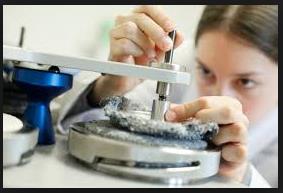
NewsInformation Center
The Abrasion tests
2018/03/06
Abrasion tests are all subject to variation due to changes in the abradant during specific tests. The abradant must be changed accordingly at frequent intervals or checked periodically against a standard. With disposable abradants, the abradant is used only once or changed after limited use. With permanent abradants that use hardened metal or equivalent surfaces, it is assumed that the abradant will not change appreciably in a specific series of tests, but obviously similar abradants used in different laboratories will not likely change at the same rate due to differences in usage.


Permanent abradants also may change due to pick up of finishing or other material from test fabrics and must accordingly be cleaned at frequent intervals. The measurement of the relative amount of abrasion also may be affected by the method of evaluation and may be influenced by the judgment of the operator.
The resistance of textile materials to abrasion as measured on a testing machine in the laboratory is generally only one of several factors contributing to wear performance or durability as experienced in the actual use of the material. While “abrasion resistance” and “durability”frequently are related, the relationship varies with different end uses, and different factors may be necessary in any calculation of predicted durability from specific abrasion data.
Laboratory tests may be reliable as an indication of relative end-use performance in cases where the difference in abrasion resistance of various materials is large, but they should not be relied upon where differences in laboratory test findings are small. In general, they should not be relied upon for prediction of actual wear-life in specific-end uses unless there are data showing the specific relationship between laboratory abrasion tests and actual wear in the intended end-use.
These general observations apply to all types of fabrics, including woven, nonwoven, and knit apparel fabrics, household fabrics, industrial fabrics, and floor coverings. It is not surprising, therefore, to find that there are many different types of abrasion testing machines, abradants, testing conditions, testing procedures, methods of evaluation of abrasion resistance, and interpretation of results.
All the test methods and Abrasion test instruments so far developed for abrasion resistance may show a high degree of variability in results obtained by different operators and in different laboratories; however, they represent the methods now most widely in use.
Previous: UV Aging Test Chamber Structure
N e x t : Necessities For Scrub Resistance Test



